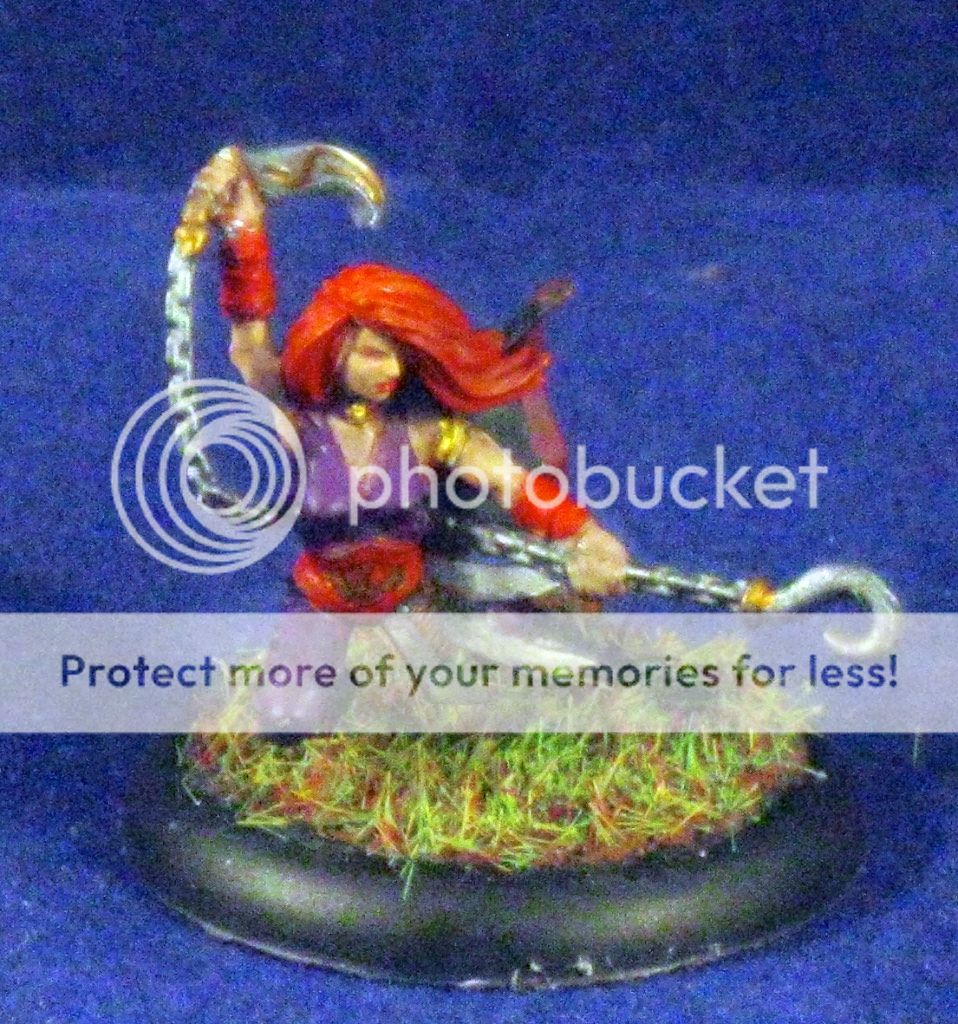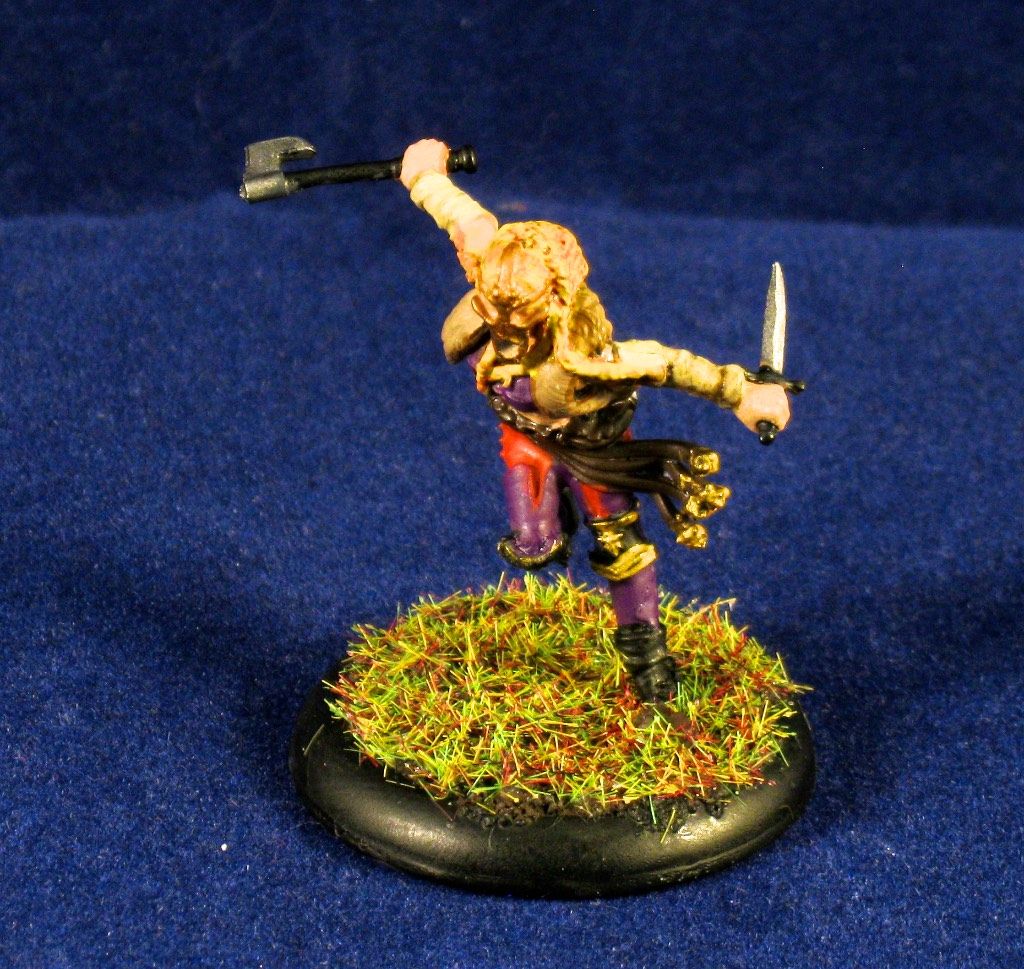I've recently condensed the Big League experience down to a single day event for my local community. This went over fairly well in my local group and lot of people in the global Guild Ball community expressed interest in how I accomplished it. Here's a write-up on what I did and what I would change.
General Idea and Objectives
Steamforged Games released the campaign rules for Guild Ball in the Season 2 rulebook, The Big League. I’ve run the Big League for my local group twice so far, with a very positive reception for the rules. There are some rules which have become dated due to the changes with the Season 3 update however the campaign holds up under the changes very well. The general idea behind the big league is one with some Guild Ball game play and some behind the scenes “wheeling and dealing”. The league rewards three different types of players, competitive players looking to win games, more casual players looking for key game moments, and players who mostly ignore win/loss in a game but enjoy the intrigue behind the scenes.
The success of the Big League campaign format for my gaming group encouraged some work to bring the Big League to a single day casual event. The typical big league is run over several weeks, ideally equal to 1 week less than the number of players in the league. The effort to boil this down to a one-day event required that I keep my eyes on a couple key goals:
- Restrict the experience to 3 rounds of games
- Maintain the capability and feeling for P-1 weeks Wheeling and Dealing (i.e. favours)
- Maintain the capability and feeling for P-1 weeks of league card expansion (i.e. campaign points)
- Maintain the 3-fold aspect of Competition/Big Play Moments/Intrigue with the limited timeframe of a single day event.
What did I do, what changes did I make?
In preparing for running a Big League in a Day I faced the challenge of distilling the “feeling” of a 7(ish) week league down to 1 day across 3 games. I also had my objectives to keep in mind to capture the same enjoyment for the players. I spent time thinking about those two goals and came up with the following changes.
First I decided to add favours at the start of the day prior to game one. This is a change that has been very positively received in my normal Big Leagues and it would similarly kick-start the wheeling and dealing for the BLiaD. I also decided to increase the access to guild plot card from the start to 2 plot cards. This would give people aiming for those “key play moments” access to more cards from the start. It would also help spur accumulation of campaign points starting in the first game. I knew I would have to increase the speed players would be able to gain campaign points and favours, so I also adjusted for round 2 and 3 on both those fronts.
One of the impacts to favours in the Big League is based on the win-record (League points) of your opponent. Playing an opponent with more league points you get a chance to earn more favours. Additionally, if you beat that opponent you gain an additional increase in favours earned. A traditional Big League where everyone optimally plays everyone else in the league opens opportunities for this to happen. I feel this is an important aspect of the system for a couple key reasons. First, it’s the best opportunity for intrigue focused players maximizing the currency they use in the league. Second, it creates key moments for all players in the league where favours and behind-the-scenes deals can lead to an upset, unseating a league point leader with an unexpected loss. Other players in the league can feed favorable deals to the lower ranked player to beef up their team through the judicious and creative use of favours. I needed to find a way to keep this aspect of pairings in the event despite the event being only 3 rounds. I achieved this by pairing based on favours spent, not on league points or a win/loss/points record. I also added an additional way to spend favours, Match Fixing, where the instigator could choose two players to be opponents in the upcoming round.
Lastly, I looked at the overall balance of the day across three rounds. I decided to adjust some of the escalators along with building in an increasing Longshanks Tax on favour expenditure. The adjusted escalators made sure there was not one all-decisive round during the day which would be the only round that mattered. Players would need to pursue their chosen objective all three rounds to achieve their desired result. The Longshanks tax assured that the escalator on favours stayed balanced through the day, despite having more to spend each round.
After all that planning and thinking my final set of rules resulted in the following:
Event Start:
- All players start with 5 favours
- Maximum 5 favours can be spent in round 1 W&D
- Players can build their plot deck from:
- Season 1, 2, 3 plot cards
- Common Big League plot cards
- 2 selected Guild Plot Cards
Round 1
- 3 league points for a win / 0 league points for a loss
- 1 favour for a win / 3 favuor for a loss
- 1:1 campaign points earned from plot cards
- +1 favour Longshanks Tax for player trades, 0 for all else
Round 2
- Max 8 Favour can be spent in W&D
- Player Trades & Campaign points: +1 Longshanks Tax
- Match Fixing for round 3: 3 Tax + LP difference between higher LP and lower LP
- 5 league points for a win / 2 league points for a loss
- 2 favour for winning a game / 4 favour for a loss
- +1 Favour for playing an opponent with more LP / +2 Favour for winning vs more LP
- 2:1 campaign points earned from plot cards
Round 3 & Post game
- Max 15 Favour can be spent in W&D
- Player Trade, Plot Card Trade, Campaign Points: +2 Longshanks Tax
- Sponsorships: +1 longshanks tax
- Match Fixing: same as round 2
- 7 League points for a win / 3 league points for a loss
- 3 favours for winning / 9 favours for a loss
- +2 favour for playing opponent with more LP / +4 for winning vs more LP
- 1:1 campaign points from plot cards
How did the day go?
Overall the day went very well, with all the participants having a great time playing 3 casual games of guild ball. Despite the moderate level of interest for my area, only 5 players attended on the day, necessitating me to play as to avoid a bye. I’ confident this turn out is primarily attributed to a combination of more competitive than casual players in my areas plus competing events on the same weekend plus people schedule conflicts. I say this based on the feedback I’ve received from people who had intended to attend but didn’t (i.e. scheduling conflicts) and my general observation of who did and did not show interest in this event.
Leading into round one, things went very smoothly, with everyone generally understanding how the BLiaD would work, assembling their decks, and grabbing sponsorship's. Early moves were made to buy campaign points for favours early on, a couple players aiming to get access to an additional guild plot card. Round 1 played out without a hitch, although some general confusion about how the big-league plot cards and similar cards across seasons 1, 2, & 3, would work. These were quickly resolved and we accumulated the results to move into round 2. The end of round 1 did see wheeling and dealing timing advantages come into play as players who had finished their games first jumped into spending favours to grab specific players (Tater) and sponsorship's before other players had finished their games and moved to Wheeling and Dealing. This is something to be watched but did not upset anyone in my event.
The escalation of points in round 2 led to some key purchases for round three. One player came late to Wheeling and Dealing and spent their favours to match-fix themselves vs the other League Champion contender. Due to the small number of players and a desire to avoid same-match pairings, this resulted in the entire round 3 pairings being determined by that player. This was not necessarily a negative thing but was an interesting result to see. The overall escalation of points resulted in the desired outcome that all 3 rounds were important to the end of day awards, along with keeping the final post-round-3 wheeling and dealing phase as part of the determination factors.
What (if anything) would I change?
After the event, I asked for feedback from the group along with sharing some of my observations and thoughts. Based on all that feedback I would make some adjustments to the format. I would pull forward the earning escalation (2:1 campaign points) from round 2 to round 1, then create another level of escalation in round 3. I’d keep the longshanks tax largely the same, although I’d add a tax of 1 favour for sponsorships to round 2. I’d set round 3 to contain no escalation (1:1 campaign points, standard favours), but maintain the higher longshanks tax for the round.
I think that those changes would speed up the attainment of favours and campaign points, opening increased access to those parts of the league people are looking for. The escalated league points should be watched to assure than no single round is a decider, but all 3 rounds matter for the league champion.
-->


































